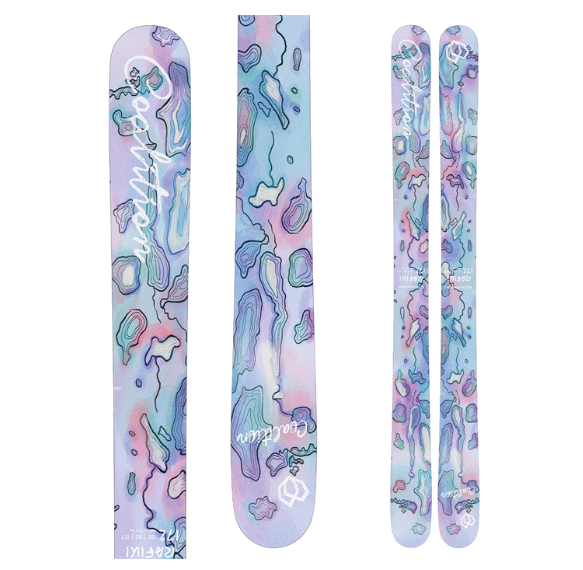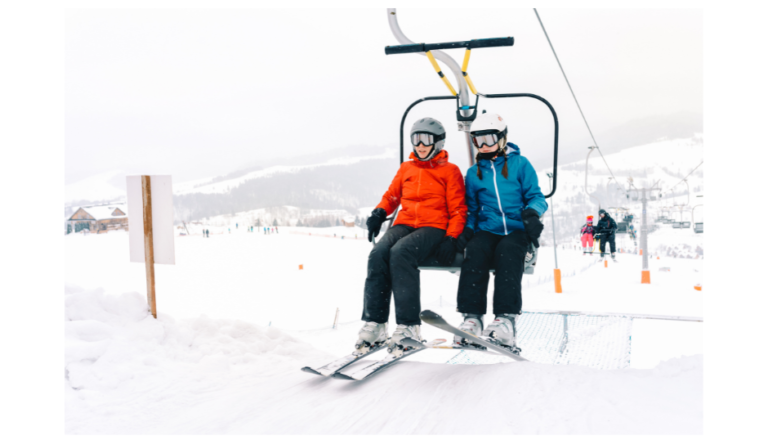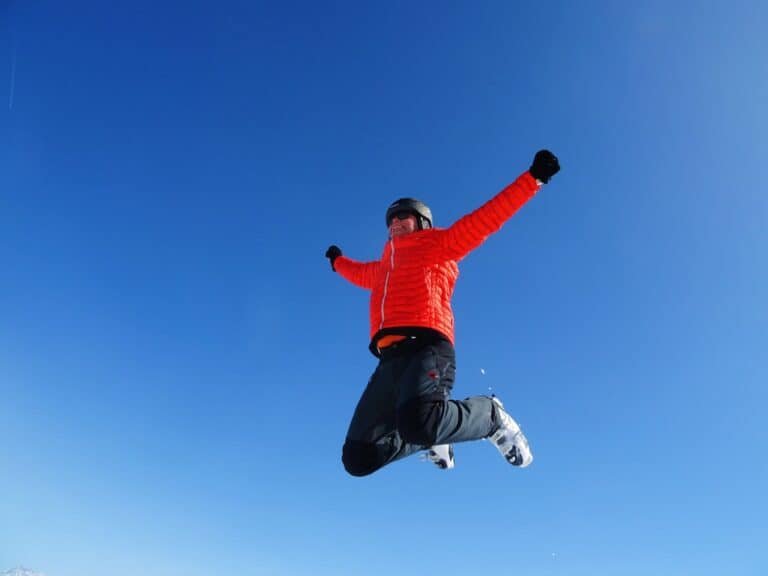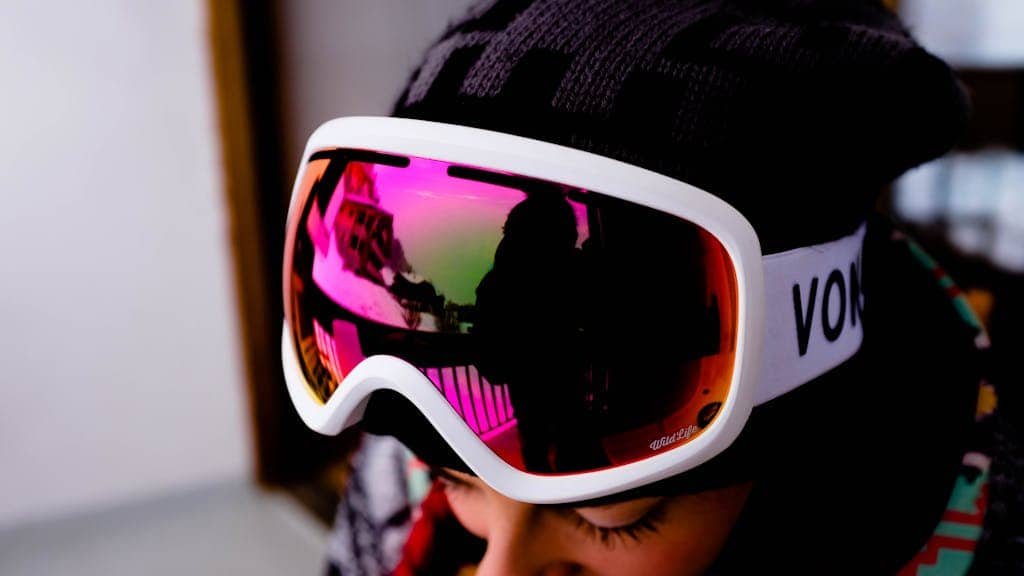How to Buy the Right Skis for You: Finding the Perfect Pair
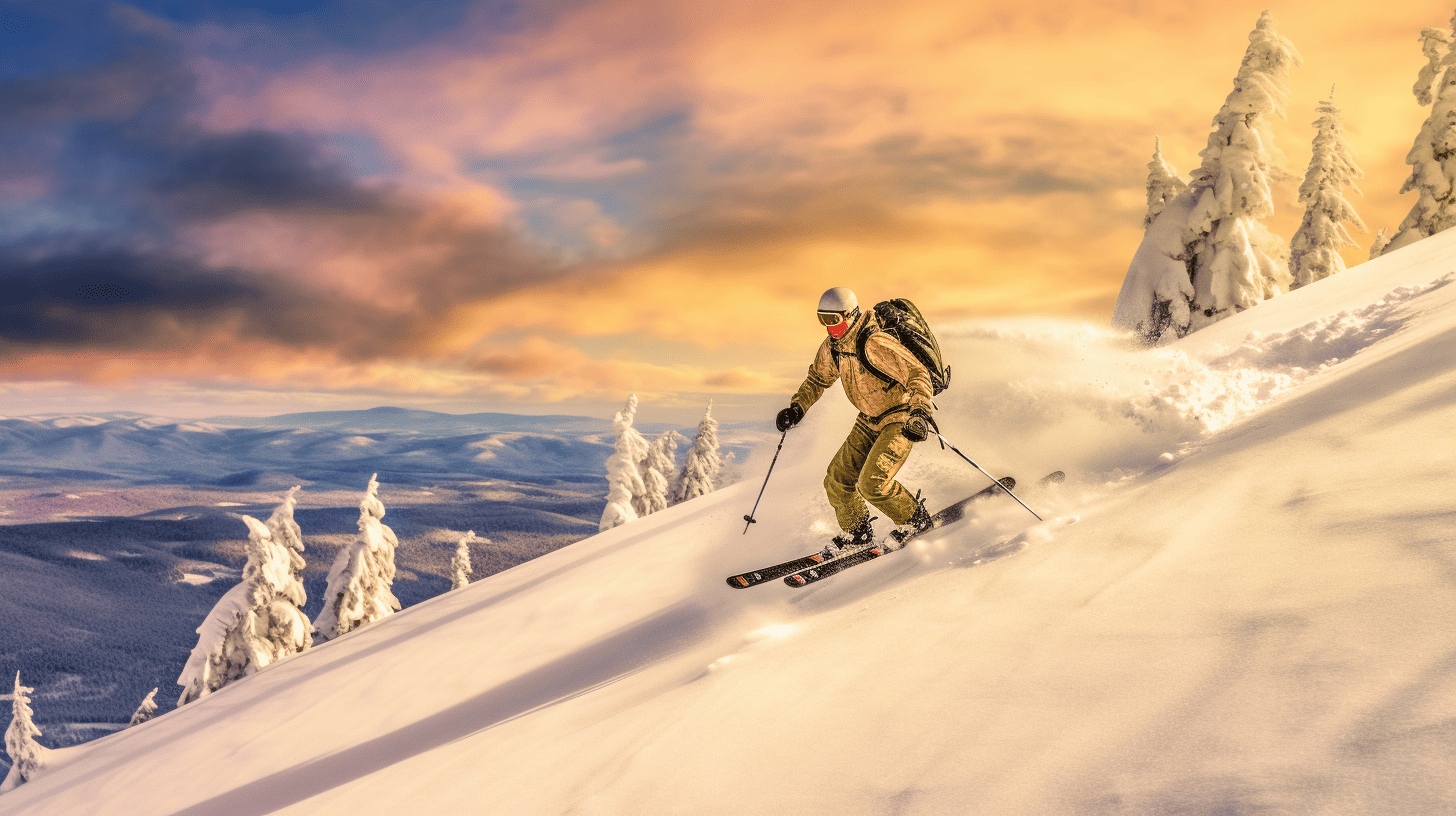
Imagine yourself gliding down a snowy mountain, carving through fresh powder, and effortlessly navigating challenging terrain. The right pair of skis can make all the difference in transforming this dream into reality. Skis come in various shapes, sizes, and designs to cater to different skill levels, preferences, and terrains. But with so many options available, how do you find the perfect pair for you? This comprehensive guide will help you navigate the world of skis, so you can confidently choose the perfect match for your skiing style and needs.
Key Takeaway
- Skill Level and Style: Choose skis that match your skill level and skiing style, whether you’re a beginner, intermediate, or expert, and whether you prefer groomed runs, powder, or park skiing.
- Length and Width: Ski length should align with your height, skill level, and skiing style. Width affects performance in different snow conditions – narrower skis for groomed runs and wider skis for powder.
- Flex: Flexibility varies based on the ski’s construction. Stiffer skis offer more stability at high speeds, while softer skis are easier to turn.
- Camber and Rocker: These design aspects influence the ski’s handling. Camber offers better grip on hard snow, while rocker helps in deep snow.
- Material and Construction: Different materials impact the ski’s performance, weight, and durability.
- Brand and Budget: Consider reputable brands within your budget, balancing quality and affordability.
- Demo Options: If possible, demo different skis to find the best fit for your needs.
- Consult Experts: Speak with knowledgeable staff at ski shops for recommendations based on your specific requirements.
What Skier Type Are You?

Understanding your skiing style and needs is the first step toward finding the right skis. Your skill level, preferred terrain, and goals play a significant role in determining the perfect pair. Are you a beginner focused on learning the fundamentals or an advanced skier seeking new challenges? Do you prefer groomed runs or exploring the backcountry?
Let’s delve into the specific needs of different categories of skiers: beginner, intermediate, advanced, and backcountry.
Cautious Or Beginner Skiers
When it comes to selecting skis for cautious or beginner skiers, the focus should be on finding equipment that fosters confidence and ease of use. The following are key considerations for these skiers:
- Softer Flex Skis: For those new to skiing or who prefer a cautious approach, skis with a softer flex are highly recommended. A softer flex makes the ski more forgiving and easier to handle, which is crucial for building confidence. These skis are more flexible and allow for easier turn initiation, which helps in learning and mastering basic skiing techniques. This feature is particularly beneficial on gentler slopes where precise control and gentle turns are more common.
- Shorter Ski Length: Beginner skiers should also consider opting for shorter skis. Shorter skis are much easier to maneuver and control, making them ideal for those who are still getting comfortable with the basics of skiing. They offer better stability at lower speeds and make turning less intimidating. The reduced length also means less effort is required to steer the skis, reducing fatigue and allowing for a more enjoyable learning experience.
As a beginner, you need skis that make it easy to learn and build confidence on the slopes. Beginner skis are characterized by:
Easy maneuverability
Lightweight construction
Forgiving nature
Softer flex
Narrower widths
Composite, foam, or softer wood cores
Capped constructions
The rocker in the tip and tail of beginner skis helps make them less “hooky” and easier to initiate turns. As you progress, your ski preferences may evolve, but starting with the right beginner-friendly pair will set you up for success.
Moderate Skiers
Moderate skiers, often comfortable on varied terrain and possessing solid skiing skills, should look for skis that offer a harmonious balance between control and adaptability. The following recommendations cater to their needs:
- Medium Flex Skis: Skiers with moderate experience will benefit from skis that have a medium flex. This level of flex provides a sweet spot between rigidity and flexibility. Medium flex skis deliver a good balance, enabling better control at higher speeds and more responsiveness in turns while still maintaining a comfortable level of forgiveness. This makes them suitable for skiers who are ready to tackle more challenging slopes but still appreciate a ski that is not overly demanding.
- All-Mountain Skis: All-mountain skis are an ideal choice for moderate skiers. These skis are designed to perform well in a variety of conditions, from groomed runs to light off-piste terrain. They typically feature a design that accommodates both carving on hardpack and floating in softer snow. This versatility is crucial for moderate skiers who wish to explore different aspects of the mountain and improve their skills in various skiing environments. The adaptability of all-mountain skis means that skiers won’t be limited by their equipment when they wish to experiment with different types of runs and snow conditions.
Intermediate to Advanced Skiers
Intermediate and advanced skiers require skis that offer stability, precision, and versatility for different types of terrain and conditions. These skis tend to be wider than beginner-intermediate skis, have a sturdy wood core, and are usually constructed with sandwich sidewalls. They can have full camber, rocker, or a combination of both.
Advanced and expert skiers often have specific objectives, such as conquering challenging terrain, increasing speed, or pushing boundaries. Selecting the appropriate ski based on your skill level and goals will enable you to tackle these challenges with confidence.
Aggressive Skiers
Aggressive skiers, known for their high-speed descents and dynamic turns, require skis that can match their intense skiing style and provide unwavering stability. Here are key considerations for skis suited to their needs:
- Stiffer Flex Skis: For skiers who approach the slopes with vigor and speed, stiffer flex skis are essential. These skis offer superior control at high speeds, delivering the precision and responsiveness that aggressive skiers demand. Stiffer skis maintain their shape under the stress of fast, powerful turns, allowing for accurate and controlled maneuvers. They also provide better edge grip on hard snow or icy conditions, which is crucial for skiers who push their limits on steep and challenging terrains.
- Longer Length Skis: In addition to a stiffer flex, aggressive skiers should opt for skis that are longer in length. Longer skis offer increased stability at high speeds, an essential factor for those who like to charge down the mountain. The added length provides a larger surface area, which helps in distributing the skier’s weight more evenly and reduces the chances of skidding or losing control. Moreover, longer skis improve the ski’s ability to float over varied snow conditions, including deep powder, without sacrificing speed or agility.
Backcountry Skiers

For those who love the thrill of exploring untouched terrain and deep powder, backcountry skis are the way to go. These longer skis are typically lighter than alpine skis and come with waist widths between 80mm and 120mm, offering increased flotation and climbing capabilities.
Alpine touring skis, designed for both climbing and descending, are a popular choice for all-around backcountry skiing. When selecting bindings for backcountry skis, consider whether you prefer telemark or alpine touring skiing. Don’t forget to also choose the appropriate climbing skins for your ascent.
With the right backcountry skis, you’ll be well-equipped to conquer off-piste terrain and powder-filled adventures. Read my article on how to choose alpine touring skis for comprehensive guidance.
Ski Dimensions and Performance
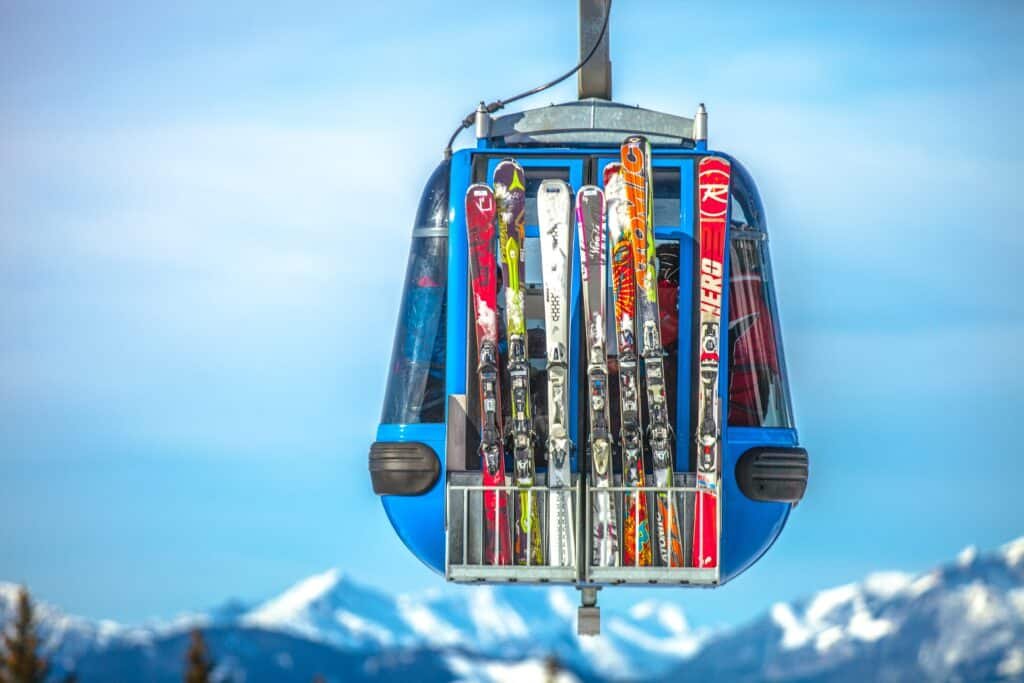
Ski dimensions are crucial in determining how a ski performs and should be carefully considered when choosing your perfect pair. Three key dimensions to consider are waist width, sidecut, and tip/tail width. Each of these dimensions has a unique impact on ski performance, affecting factors such as turn quickness, flotation, and stability.
Let’s take a closer look at each of these dimensions and how they influence ski performance.
Waist Width
Waist width is the width of the ski at its narrowest point, usually between the bindings. This dimension plays a significant role in determining turn quickness and flotation. Narrower waist widths offer better control over your edges when skiing on groomed slopes, while wider waist widths provide better flotation in powder and choppy snow.
When deciding on the best waist width, consider your skiing style and the type of terrain you’ll be hitting. Skiing on groomed slopes requires a narrower waist width for better control while skiing on groomed slopes.
Sidecut and Turning Radius
Sidecut and turning radius are key factors in determining the tightness of turns your skis can make. The sidecut radius, usually measured in meters, is influenced by the difference in width between the tip, waist, and tail of the ski. The width of a ski’s waist is narrower than the tip and tail. This results in a reduced sidecut radius, which allows for short and tight turns. A ski with a wider waist is better for bigger, long-radius turns. This is because the sidecut radius of the ski is longer in comparison to its tip and tail.
Understanding the sidecut and turning radius of a ski will help you choose a ski that matches your preferred turn style and terrain.
Tip and Tail Width
The width of the tip and tail of a ski affects its performance in different snow conditions. Wider tips are beneficial for carving tight turns on hard snow, while narrower tails help sustain turns, especially important for experienced skiers who enjoy making fast turns.
The difference between the tip, waist, and tail width influences the ski’s sidecut and turning radius, ultimately affecting its suitability for your skiing style and preferences. Understanding the role of tip and tail width in ski performance will help you choose a ski that performs optimally in your desired snow conditions.
Cambered vs. Rockered Skis
Cambered and rockered skis offer different benefits, making them suited for different skiing styles and terrains. Traditional camber provides energy and liveliness, making it ideal for groomed slopes and precise turns. On the other hand, rocker (reverse camber) offers maneuverability and versatility, with better flotation in deep snow and easier turn initiation.
Let’s dive deeper into the characteristics and benefits of cambered and rockered skis.
Traditional Camber
Traditional camber is the classic ski profile, with a slight arch in the middle and the tip and tail slightly raised. This design, often referred to as a cambered ski, provides excellent edge grip and energy return, making it perfect for carving on groomed slopes.
However, traditional camber can be challenging to maneuver in deep snow and may not be as forgiving as other ski profiles. Skiers who prefer groomed runs and precise turns may find traditional camber an ideal choice.
Rocker (Reverse Camber)
Rocker, also known as reverse camber, is a newer ski profile that offers several advantages over traditional camber. A rockered ski provides better flotation in deep snow and makes it easier to initiate turns, particularly in backcountry conditions. However, they may have a shortened effective edge and less edge grip on icy snow, making them less responsive for carving on groomed trails.
For skiers who enjoy off-piste adventures and challenging terrains, rocker skis can be an excellent option.
Skis for Different Terrains
The type of ski you choose greatly impacts your skiing experience, as different ski types cater to various terrains and conditions. Whether you’re a fan of groomed runs, deep powder, or a mix of both, there’s a ski type designed to suit your needs.
In this section, we’ll explore the characteristics of all mountain, powder, carving, and alpine touring skis, and how each type performs under specific conditions.
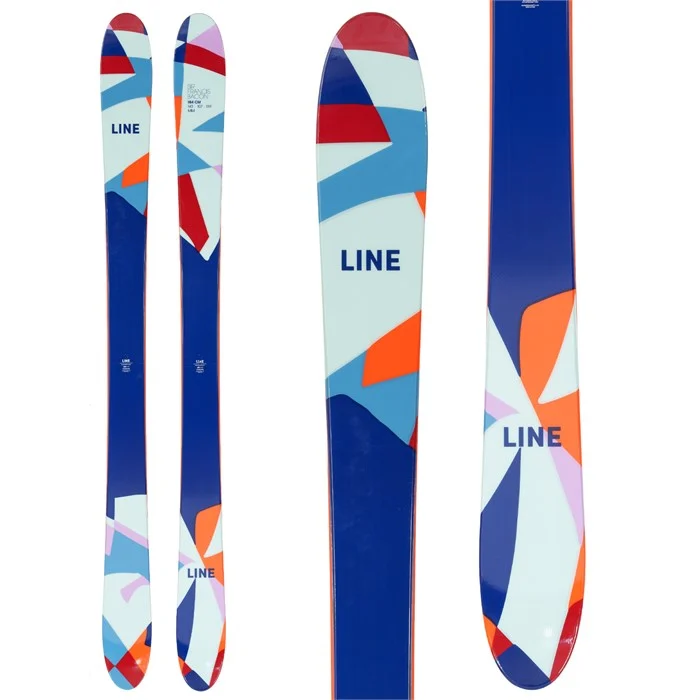
All Mountain Skis
All mountain skis are the versatile workhorses of the ski world, designed to perform well on various terrains. They typically feature mid-fat waists and rockered tips, providing a great combination of versatility, control, and flotation.
While all mountain skis may not excel in any specific condition or terrain, they are a popular choice for skiers who want one pair of skis to handle a range of snow conditions and landscapes.
Powder Skis
For those who dream of gliding through deep, untouched powder, powder skis are the ideal choice. These skis are designed specifically for deep snow and backcountry conditions, with wide waists and rocker profiles for optimal flotation. The wide waist width allows the ski to float on top of the snow, providing a smooth and effortless ride in powder and soft snow conditions.
Powder skis enable you to explore hidden stashes and off-piste terrain with ease.
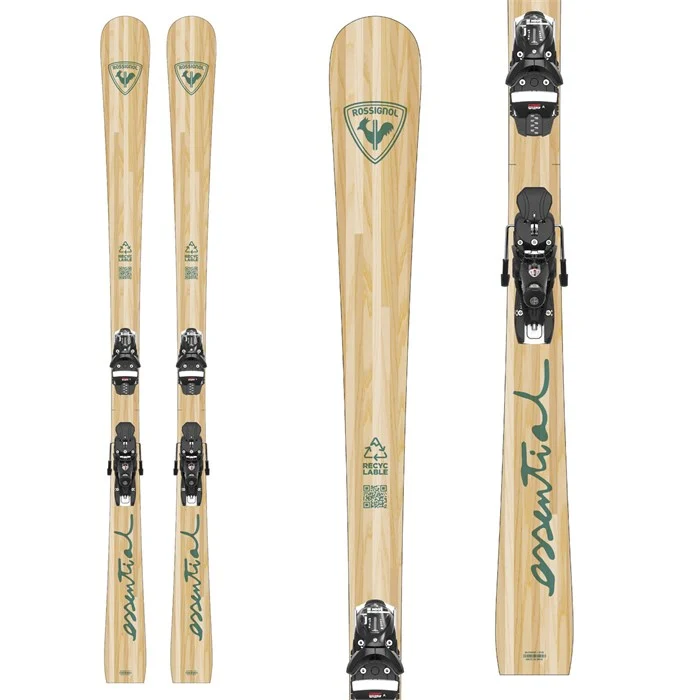
Carving Skis
Carving skis are the precision instruments of the ski world, designed for high-speed turns on groomed slopes. These skis typically have narrow waists and short turn radii, enabling quick edge-to-edge responsiveness and precise turn initiation and exit on groomed runs and hard packs.
If making tight, controlled turns on groomed terrain is your idea of skiing bliss, carving skis are the perfect match.
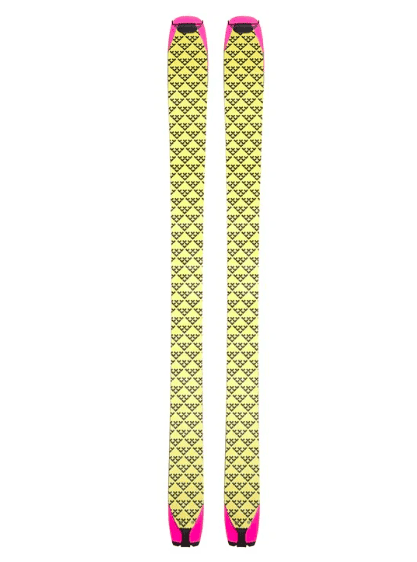
Alpine Touring
Alpine touring skis are built for the adventurous skier who enjoys both uphill and downhill skiing. These skis are:
Lightweight and versatile
Have varying widths to suit different terrain and snow conditions
Constructed with lightweight materials such as carbon fiber, fiberglass, and Kevlar
Designed to balance uphill climbing efficiency with downhill performance
For those who seek the freedom and challenge of backcountry exploration, alpine touring skis are the perfect companion
Women’s Skis

Women’s skis are specifically designed to cater to the unique needs and preferences of female skiers. They are typically lighter, shorter, and softer than men’s skis, accommodating a lower center of gravity and less body mass. With shorter skis, women’s skis often have their mounting positions slightly further forward than men’s skis to better suit female performance.
While there’s no reason a female skier can’t ski well on a men’s ski, and vice versa, choosing women’s skis can provide a more tailored and comfortable skiing experience.
Kids’ Skis

Selecting the right size skis for your child is crucial for their safety, comfort, and enjoyment on the slopes. When choosing kids’ skis, consider factors such as age, size, and skill level. For younger children, skis should usually come up to about 6 to 8 inches below their heads, while older kids’ skis should reach a part of their middle or upper face.
By following these guidelines and considering your child’s unique needs, you can ensure a fun and successful skiing experience for your little ones.
Ski Length and Weight Considerations

Selecting the right ski length and weight is essential for optimal performance and control on the slopes. Factors such as:
height
ability
ski type
terrain
personal preference
Factors such as skier weight, height, and ability level should all be considered when determining the appropriate ski length and weight.
The general rule of thumb for ski length is that the tips should come up to somewhere between your chin and the top of your head when the tails are on the ground. However, other factors like ski type and rocker profile may require sizing up or down within the suggested range, as explained in the following subsection.
Sizing Up or Down
Sizing up or down within the suggested range may be necessary depending on ski type, rocker profile, and personal preference. For instance, beginner skiers may benefit from a shorter ski for easier handling, while more experienced skiers may prefer a longer ski for increased stability and speed.
Considering factors such as ski type and rocker profile, along with your own preferences, will ensure you select a ski length that provides the best performance and enjoyment on the slopes.
Integrated Ski Systems
Integrated ski systems are a convenient option for skiers, as they come with bindings already included and require specific models of bindings for proper compatibility. While integrated ski systems offer a simpler buying process, it’s important to remember that the bindings should always be adjusted by a certified technician. This ensures proper setup and safety, allowing you to focus on enjoying your time on the mountain.
It’s important to take the time to choose skis that suit your needs, as finding the right ski system is crucial.
Conclusion
The key to an enhanced and satisfying skiing experience lies in selecting skis that align with the skier’s ability level and personal style. Understanding the nuances of different ski types and their specific features is crucial in making an informed choice. Whether you’re a cautious beginner, a moderate skier, or an aggressive enthusiast, the right pair of skis can significantly elevate your performance and enjoyment on the slopes.
For beginners, choosing skis with softer flex and shorter lengths will foster easier control and confidence-building as you learn. Moderate skiers benefit from versatile, all-mountain skis that adapt to varying conditions and offer a balance of control and comfort. Aggressive skiers, on the other hand, require skis with stiffer flex and longer lengths to handle high speeds and demanding terrains with precision.
Ultimately, matching ski characteristics to your ability and style not only enhances your performance but also maximizes your safety and enjoyment on the slopes. It’s about finding that perfect pair that feels like an extension of yourself, allowing you to gracefully glide, turn, and explore the mountains to your heart’s content. With the right skis, the mountain becomes not just a landscape to traverse, but a canvas for your skiing artistry.
Frequently Asked Questions
What is the plural form of ski?
The plural form of the ski is ’skis’, which are a pair of long, slender runners typically made from wood, plastic, or metal used for gliding over snow.
What are beginner skis?
Beginner skis are designed for easier slopes and terrains, with a shorter length, more flexibility, and a thinner waist width than advanced skis.
They’re perfect for the beginner skier looking to travel at slower speeds.
How do I choose the right skis for my skill level and preferred terrain?
Choose the skis that best suit your style, skill level, terrain preferences, and goals; this will ensure you get the most out of your skiing experience.
Take the time to research the different types of skis available and the features they offer. Consider the type of skiing you will be doing, the conditions you will be skiing in, and the terrain you will be skiing on.
What are the key ski dimensions that affect performance?
The key ski dimensions that affect performance are waist width, sidecut, and tip/tail width.
What is the difference between cambered and rockered skis?
Cambered skis have more energy and liveliness, while rockered skis offer greater maneuverability and versatility.

